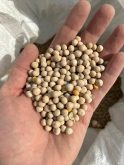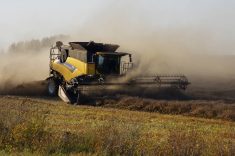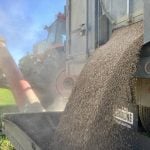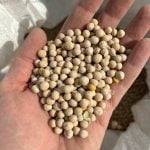Saskatchewan canola growers will want to be wary this spring of a serious ailment that has yet to affect any canola crops in the province, after a lone soil sample turned up evidence that it may soon arrive.
The Saskatchewan Canola Development Commission (SaskCanola) warned Monday that while a 2008 crop survey has yet to turn up any canola plants affected by clubroot in Saskatchewan, a soil sample from a random west-central field in the province “may contain” the clubroot pathogen.
“To this point, test results on the sample are inconclusive and warrant further testing and monitoring of the field,” SaskCanola said.
Read Also

Pulse Weekly: No upside for peas until after New Year
Prices for green and yellow peas have dropped back across the Prairies over the last week. One of the major downward drivers was the Statistics Canada production report released earlier this month, said Levon Sargsyan of Johnston’s Grain in Calgary.
“Re-testing is now underway on another soil sample from the same field,” SaskCanola research manage Pat Flaten said, and final test results are expected to be known by the end of June.
Clubroot, primarily a soil-borne disease that affects the roots of canola and other related field and vegetable crops, first arrived on the Prairies in several canola fields in the Edmonton area in 2003 and has spread only within Alberta since then.
To confirm whether clubroot has arrived in Saskatchewan, it’s not enough just to find the pathogen’s DNA in a soil or plant sample, the commission said. It also requires observation of disease symptoms in a susceptible crop.
That said, “it is important that farmers be informed of this situation, particularly as they begin spring field operations,” Flaten said Monday. “It is also an opportunity to remind farmers to be vigilant as to their best practices regarding cleaning of field equipment, specifically equipment originating from known infested areas in Alberta, in order to prevent clubroot movement to and within Saskatchewan.”
Furthermore, he said, a crop rotation of “four years or more” will limit clubroot infestation and reduce the impact of other plant diseases.














